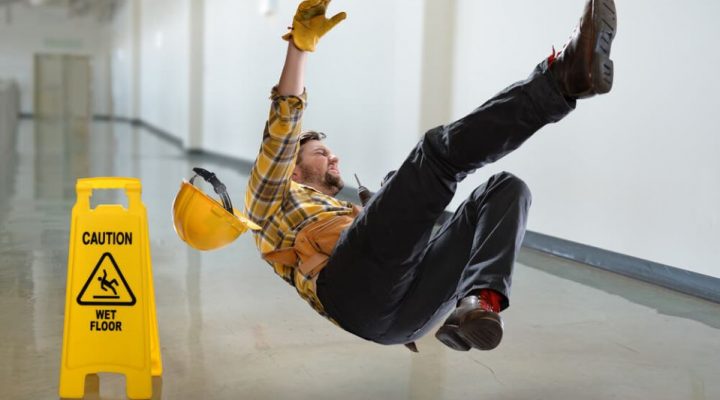Workers’ Compensation, being a “no-fault” system, provides compensation for injuries caused by slips, trips and falls.
Slips, trips and falls constitute the second most common injuries within workers’ compensation.
The injuries from slips, trips and falls can range from physical injury to death.
Slips, trips and falls are the most expensive injuries as far as US workers Compensation costs.
This article will discuss the nature of slip, trip and fall injuries.
Can Slips, Trips and Falls Be Workers Compensation Events?
Yes. Workers’ Compensation is a “no fault” system. Therefore, even if the worker was clumsy and slipped, tripped or fell and injured themselves, they are still able to receive workers’ compensation medical treatment and benefits.
What Are the Most Common Injuries as a Result?
Sprains, strains, dislocations and tears to the lower extremities are the most common injuries after a slip, trip or fall. Bell JL, Collins JW, Chiou S. Effectiveness of a no-cost-to-workers, slip-resistant footwear program for reducing slipping-related injuries in food service workers: a cluster randomized trial. Scand J Work Environ Health. 2019 Mar 1;45(2):194-202. doi: 10.5271/sjweh.3790. Epub 2018 Dec 6. PMID: 30519704.
Lower extremity injuries can include the hips, the legs, the knees, the ankles and the toes.
How Are There Fatalities from Falls?
Although falls from height are more likely to result in a fatality, falls on the same level occur more frequently and cause significant morbidity, with recent US Bureau of Labor Statistics data showing that 50% of all same-level falls resulted in >10 days sick leave. Bell JL, Collins JW, Chiou S. Effectiveness of a no-cost-to-workers, slip-resistant footwear program for reducing slipping-related injuries in food service workers: a cluster randomized trial. Scand J Work Environ Health. 2019 Mar 1;45(2):194-202. doi: 10.5271/sjweh.3790. Epub 2018 Dec 6. PMID: 30519704.
Absent a Fatality from the Accident Itself, How Can A Fall Become a Fatality?
In certain circumstances, fall injuries can lead to compensable consequences. They a fall make may someone sedentary and bedridden. This sedentary state can cause the individual to develop a host of medical problems which may, in the end, result in a fatality.
For example, “hip fractures in the elderly is an important problem that can lead to death. Many studies reported the mortality rates of hip surgery after 1 year ranged from 12.7 to 29.2%. In …[one], the total mortality rate 1 year after injury was 16.6%, similar to those reported previously. arthroplasty.biomedcentral.com
What Is the Most Common Means of Injury?
“Slipping (foot slides out of place away from a person’s base of support) is the most common precursor to slip, trip and fall injuries in various diverse worker populations.” Bell JL, Collins JW, Chiou S. Effectiveness of a no-cost-to-workers, slip-resistant footwear program for reducing slipping-related injuries in food service workers: a cluster randomized trial. Scand J Work Environ Health. 2019 Mar 1;45(2):194-202. doi: 10.5271/sjweh.3790. Epub 2018 Dec 6. PMID: 30519704.
What if I Need Advice?
If you would like a free consultation regarding workers’ compensation, please contact the Law Offices of Edward J. Singer, a Professional Law Corporation. We have been helping people in Central and Southern California deal with their workers’ compensation cases for 27 years. Contact us today for more information.



